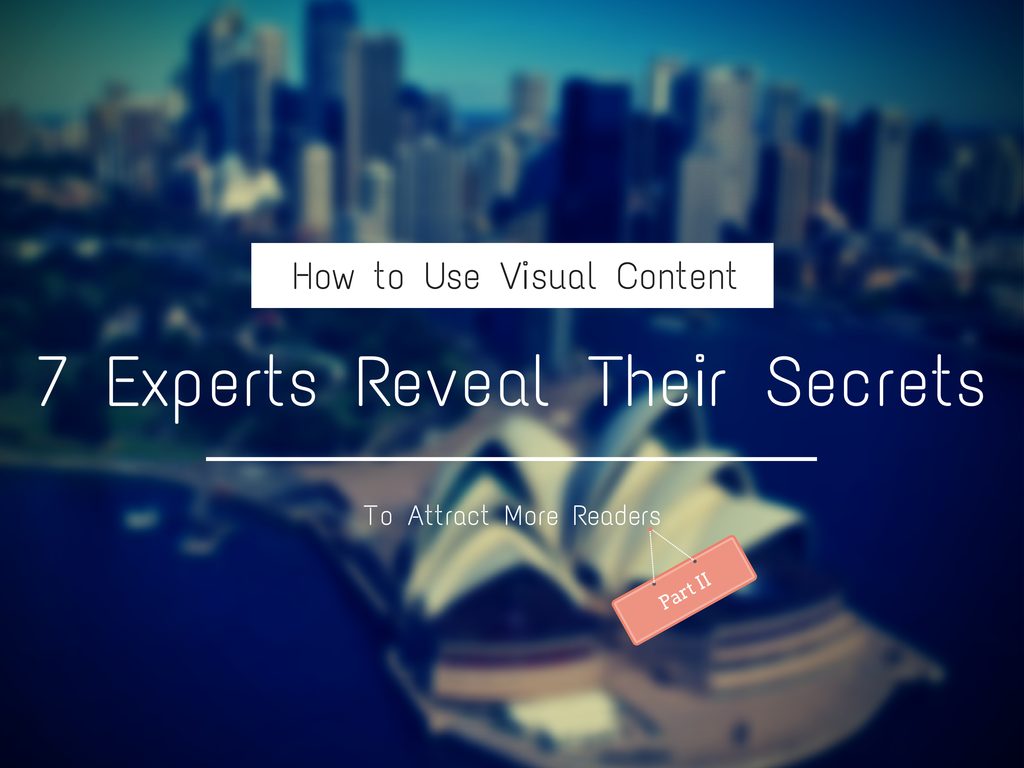|
1. Do you use any visuals in your content? Why?
I always use visuals in my content on both of my blogs, because I believe that they can be very powerful. They can make your blog stand out. Well-chosen photos or illustrations can tell a story in ways that words can’t.
Visuals can be used to capture attention or make readers feel an emotion, while diagrams, mind maps and infographics can convey a wealth of information to the reader in a compact space.
Also, a variety of studies have shown that visuals increase reader engagement. From a more practical standpoint, everyone is suffering from information overload today.
The average attention span of people online has shrunk to 8 seconds. In this incredibly noisy environment, you must use images to capture attention and differentiate your blog from all of the background noise. I think they’re essential.
2. What type of visual (video, infographic, Slideshow presentation etc) is your favorite and has worked best for you so far?
I frequently use photographs or illustrations, which I typically produce in Adobe Fireworks or Canva. I also use mind maps quite a bit, but that’s because of the subject of one of my blogs – mind mapping software.
I’ve gone through an interesting change in the format of the images I create within the last year.
I used to produce images that were strongly horizontal – usually the full width of a typical blog post. But today, social media channels like Pinterest and Google+ favor images that are taller than they are wide.
When they appear in the feeds of these channels, their height causes them to command more attention. So I have changed my production methods to match their preferred sizes.
I’ve experimented with creating and distributing image quotes on my social media channels, but I find that they don’t result in much engagement.
So many people are creating them today and they appear so frequently in social media feeds that I believe people are starting to ignore them. So I’m focused on creating outstanding content and then pairing that with excellent visuals.
Occasionally, I’ll produce a screen capture or PowerPoint video using Camtasia, depending upon the story I’m trying to tell.
Some information is best conveyed in a video rather than a still image – such as demonstration of a software program.
3. How often do you use visuals in your blog posts (how many visuals per post etc)?
It depends. For my personal blog, I’ll typically only use a single image per post. If I’m writing a book review, I’ll use two images – the main one being a photo or illustration like I just described, and the other one a book cover image.
For my mind mapping blog, I frequently use multiple images, because I frequently review software and write tutorials for my readers. Those need multiple images to show my readers what I’m talking about or to help them understand how to do something.
4. What’s your one best tip you’d like to give to all bloggers and online marketers for creating visual content?
I urge the readers of this post to experiment. There are a number of really excellent new tools that can help you create compelling visuals, infographics, videos and more.
Many are low or no cost. Canva comes to mind. It comes with preset image sizes and a huge library of images and illustrations. You can also upload your own quite easily.
There are also a wealth of mobile apps that can help you produce image quotes, enhance your photographs and much more.
Play around with them and learn what works and what doesn’t. Learn from and be inspired by the work of others. |






 Krista Neher
Krista Neher Sharon Hurley Hall
Sharon Hurley Hall Adam Connell
Adam Connell Chuck Frey
Chuck Frey



Pingback: 7 Experts Reveal Their Secrets: How to Use Visu...